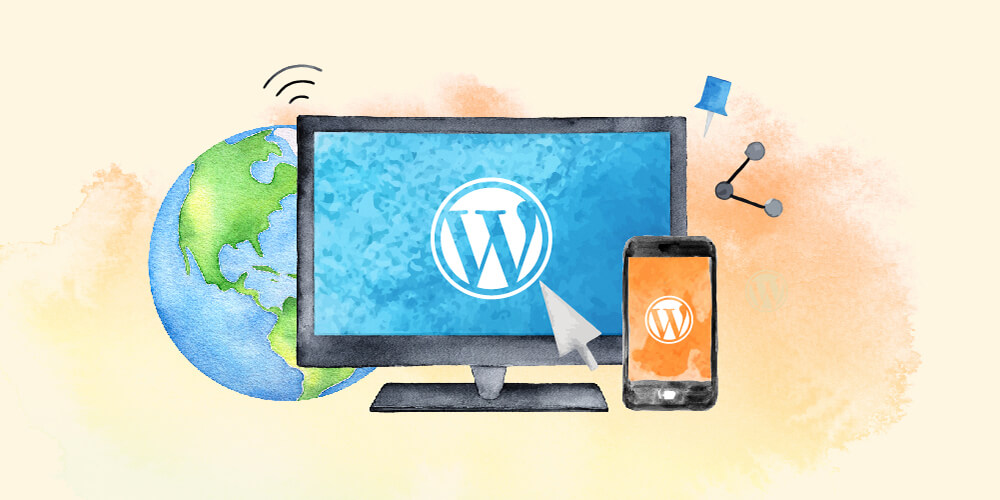If there’s anything we’ve learned from the “web 2.0” era, it’s that the general trend of technology is towards centralization. Search was conquered by Google (I still remember you, Alta-Vista), online e-commerce coalesced around Amazon and Walmart, and much of the blogosphere has migrated into closed platforms like Facebook, Medium, and Substack. Even in the WordPress space, acquisition fever has caught hold, and more of the big fish like GoDaddy, Automattic, and Liquid Web are building up their arsenal of WordPress-adjacent platforms.
We wrote recently about Elementor’s move into cloud hosting as an example of the distinct “flavors” of WordPress that users will become more accustomed to over time. Updating a sidebar or a menu can be a distinct experience when comparing Elementor to Full Site Editing to original-flavor WordPress. Hosting companies have been the central players in this, but of course the clearest example of the unique user-interface is WordPress.com.
The user experience of WordPress.com has always been distinct from open source WordPress, but recently it has been hard not to notice how Automattic is cooking up the best treats for their proprietary platform. On the one hand, it’s hard to complain about free software, especially when Automattic contributes so much back to the community. Yet, the user experience gap between WordPress.com and self-hosted has only grown wider, with much of the dashboard experience being almost unrecognizable between the two.
I recently wrote about the state of dashboard notifications inside of WordPress, something that dot-com users don’t experience in quite the same way. Similarly, while open source users can technically use the official WordPress mobile apps, they’ll need to open their site up to Automattic’s servers via the Jetpack plugin and Automattic’s APIs. (This certainly made sense back in the pre-REST API days, but am I crazy in assuming that we could start to open this up?) Some of this is simply priorities. We all have our wish lists of what we’d like to see in WordPress, but there’s only so many features that can make each release. However, the benefits of building proprietary platforms over open source solutions has become even more clear with this latest news.
WordPress.com has taken the next big step and announced their baked-in “marketplace”, where users will be able to buy anything from themes and plugins to professional support and services. For more details, I recommend the great writeup over on the Tavern. The basic idea is that WordPress.com will be curating products and services and offering a path to purchase directly inside the dashboard, making use of those millions of credit card credentials they already have on file.
The best correlation I can see here is Apple’s App Store for iOS. This new marketplace, much like the App Store, looks like it will be a curated experience through a centralized payment handler. As an iOS user, I’m actually a fan of a well-done curated experience, and I’ve never found myself wishing to break my iPhone out of the walled garden. I love that I can see or even pause my HBO Max subscription directly on in my iCloud account – and every time I want to turn off Netflix for a few months, I sorely miss Apple’s micromanagement. There’s a reason all web technologies trend towards centralization, and that reason is typically a vastly superior user experience. So I completely understand Automattic keeping this marketplace in-house and their slow and steady approach to filling it out with trusted partners. And yet, this feels like one more feature that could solve a lot of problems in open source WordPress.
There has been a lot of talk recently about the freemium business model for plugin and theme developers. The WordPress Plugin Directory is great resource for free and open-source contributions from the larger community. However, it takes a lot of work to maintain even a simple plugin, and if developers don’t have a path to profitability, it’s hard to imagine that they’ll continue contributing to or even updating their software.
We’re all hopeful for a middle ground- a place where users who are looking for additional (paid) features can find them from inside of WordPress. One of the top reasons we see so much spam on the backend of WordPress is because developers don’t actually have a decent method to upsell to their free customers. If there were better systems in place, it’d be easier to call out the worst offenders. For more on this, I recommend Jonathon Bossenger’s recent interview about the new WP Notify project.
I understand that these issues are easier discussed than solved. Nobody likes writing an article that’s heavy on problems and light on solutions. I would never want Automattic to become a de-facto app store for WordPress, taking a 30% cut from developers or even worse. But I would love to see even a trickle of these features make their way down to the broader community someday. One idea would be a ‘premium’ plugins tab that only shows offers from plugins and themes that are already running on your site. Many themes and plugins, such as WooCommerce, already include their own ‘Extensions’ tabs. Another idea would be more contributions to projects like WP Notify that could potentially help developers build relationships with potential customers.
The reality is that WordPress itself is trying to execute a very unforgiving dance step: how do you continue to build something as decentralized as self-hosted WordPress while competing with some of the best features of centralization? I’m also acutely aware that I’ve made it this far without even mentioning alternatives like web3 and blockchain, ideas that preach decentralization while also seeming to have all the trappings of web2.0-style power aggregation. How we maintain the world of open source software could very well be one of the next great questions of the internet.


